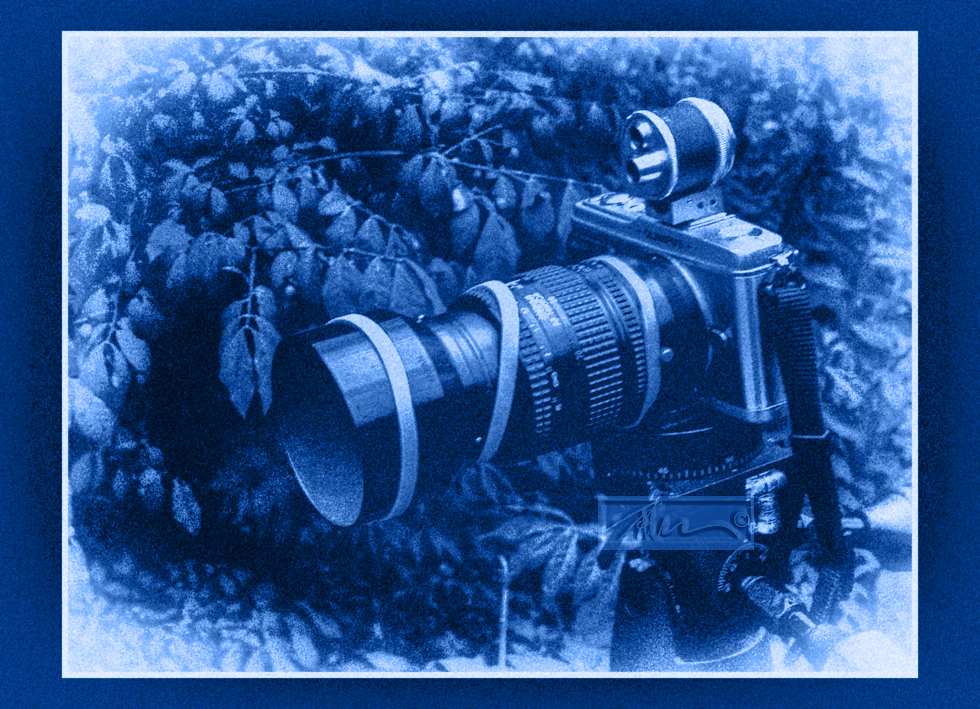Some of the best tools a photographer can have with them when shooting are a couple of rubber bands. In a pinch, they can be used for many purposes.
I happen to have a few lenses that are very easily moved from a particular focus or zoom position. There are times when the camera is mounted to a tripod, where I need to insure that the lens stays in position for the duration of the photo session. This is especially important when shooting a sequence such as HDR brackets or during long exposures.
Insuring that the lens is secure from slipping will also insure a perfect alignment when processing the files in software. Any deviation from the focus or the zoom will effect the outcome of the final image/images.
One way to insure that things stay in place is to use photo tape. While this works pretty well in a studio, in the field, it is another matter. In certain weather conditions tape can come loose. The tape must be removed when changing focus or zoom is necessary. A spool of tape is big and bulky in a camera bag or your pocket. Tape can leave residue on your lens barrel. Certain kinds of tape can be difficult to remove in rain or snow or at night when you can’t see.
A better choice for most situations is to use a couple of rubber bands to hold things where you want them to stay. A rubber band can be used as a brake of sorts for keeping the ring in position. Simply stretch the band around the lens such that it sits partially on a fixed portion of the lens and partially on the neighboring ring that rotates. The rubber band should be set at an angle in order to wrap over both surfaces.
When set in position the lens focus and/or the zoom should stay put and not slip. Any time you need to move the ring, simply push it off of the ring you want to move and push it back when you have adjusted the lens. I sometimes leave the bands on the lens barrel or on the lens shade so they are ready when I need them.
Generally, I prefer to use the wide ones because they have more surface area and therefore more grip. While they can come in many sizes, I use the that have diameters a bit smaller than the lens barrel, but almost any size will work. I’ve looped two together to form a longer one and either double wrapped or tied knots in long ones to make them shorter. It may be a good idea to carry a variety of sizes and select ones that fit the situation.
This method will work on either a focus ring or a zoom ring. It has worked for me with aperture rings as well. In some cases, you might need to use several rubber bands, but I’ve found that a single band works for most of my needs. I have fixed the position of lens adjustments on many types of lenses using this same method. Bigger lenses may require larger bands and smaller lenses may need small sized bands.
Rubber bands can be used to hold many other things in place during a shooting session. I’ve used them to hold things out of the way, to secure a flash cord to the flash socket, for positioning a business card as a makeshift lens hood, and as a way to hold bounce reflectors or gel filters to my flash. When shooting on a tripod, they can be used to secure a camera strap from flapping in the wind. On some cameras, they can be useful for holding down a shutter button for a lengthy exposure with a bulb setting. When the weather calls for it, I’ve even used them to secure a piece of plastic, a baseball cap or a garbage bag as a temporary rain or snow shield.
Besides a flashlight, batteries, a Swiss Army knife, and a few other essential problem-solving gadgets, my camera bag always has a pocket loaded with rubber bands.
Here is another post on how to use rubber-bands in your photography. Easy Paper Lens Hood / Sun Shade
Read about my book Rethinking Digital Photography.
Please have a look at some of my other posts here.
NOTICE of Copyright: THIS POSTING AS WELL AS ALL PHOTOGRAPHS, GALLERY IMAGES, AND ILLUSTRATIONS ARE COPYRIGHT © JOHN NEEL AND ARE NOT TO BE USED FOR ANY PURPOSE WITHOUT WRITTEN CONSENT FROM THE WRITER, THE PHOTOGRAPHER AND/OR lensgarden.com. THE IDEAS EXPRESSED ARE THE PROPERTY OF THE PHOTOGRAPHER AND THE AUTHOR.


